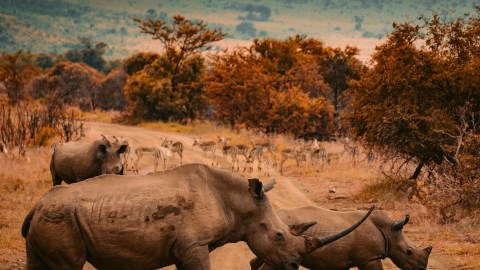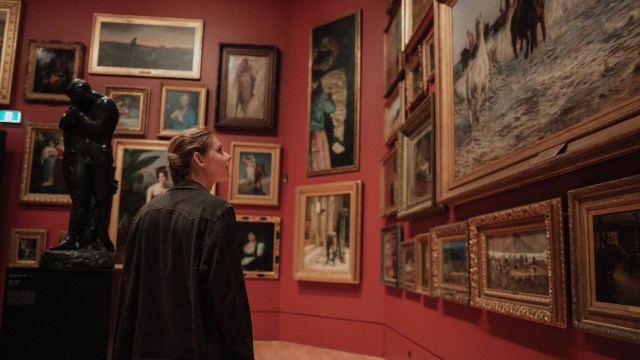9 of the most shocking facts about global extinction – and how to stop it

Photo by redcharlie on Unsplash
Earth’s fate and the devastation of the natural world were recently put under the microscope with the release of Sir David Attenborough’s Netflix documentary A Life On Our Planet.
It marks a departure from his usual nature documentary format and instead grieves for the damage wreaked by climate change and other forms of human interference.
It’s an emotional watch, as the naturalist recounts the environmental changes he has seen first-hand throughout his career, such as the devastation of the Borneo rainforest and its native orangutan population.
Here are nine reasons we too should be concerned about the future of the planet and the millions of species which call it home.
1. More than one million species are now at risk of extinction
Over a million species of animal and plant life are now threatened with dying out – more than ever before in human history, according to the International Science-Policy Platform on Biodiversity and Ecosystem Services (IPBES).
2. Wildlife population sizes dropped by two thirds since 1970
There has been an average 68% drop in global population sizes of amphibians, birds, fish mammals and reptiles between 1970 and 2018, according to the WWF’s Living Planet Report 2020.

3. Tropical sub-regions of Americas showing biggest declines
The WWF study added that there was a 94% decline of wildlife populations in tropical sub-regions of the Americas over the 50 years from 1970 – the largest fall observed anywhere on Earth.
4. Species dying off more frequently than ever before
Species are dying off 1,000 times more frequently today than during the 60 million years before the arrival of humans, according to a 2014 study by Brown University in the US. The report reinforces the “urgency to conserve what is left”, said lead author Jurriaan de Vos
5. Freshwater species declining faster than anything else
Populations of freshwater wildlife species are declining disportionately faster than others, dropping by an average of 84% between 1970 and 2018, WWF’s Living Planet Report 2020 showed. The figure also marks a rise of 1% on the 83% reported two years ago.
6. Swathes of tropical forest lost to agriculture
Some 100 million hectares of tropical forest were lost between 1980 and 2000, according to the IPBES. This was largely down to cattle ranching in Latin America and plantations in South-East Asia, researchers added.
7. Nearly 40% of plants at risk of extinction
Four in 10 (39.4%) plants are at risk of dying out, according to the Royal Botanic Gardens Kew’s State of the World’s Plants and Fungi report. An additional challenge is identifying them before extinction, with 1,942 new species of plants identified last year alone.
8. Industrial agriculture driving decline of insects
Dramatic rates of decline could lead to over 40% of the world’s insect species disappearing within decades – with habitat loss due to industrial agriculture the main driver behind the decrease, according to a study published in Science Direct.
9. Bird species also seeing populations threat
Some 3.5% of domesticated birds have become extinct since 2016, the IPBES reported. In addition, nearly a quarter (23%) of threatened birds have already been affected by climate change, The global assessment report on Biodiversity and Ecosystem Services added.
Why is biodiversity important?
Both the 2019 IPBES and 2020 WWF reports stress that the loss of habitats and species pose as much of a threat to life on Earth as climate change.
For biodiversity is not only vital for a flourishing natural world. Its deterioration also threatens the livelihoods, economies, food security and health of eight million people worldwide – a fact brought into sharp focus by the impact of the ongoing coronavirus pandemic.
But all is not lost. While Attenborough brands the damage as human kind’s “greatest mistake”, his final message is more optimistic: “If we act now, we can yet put it right.”
What can we do to save the planet?
Experts agree that one of the best ways of saving the planet is through transformation of the global food system, with agriculture accounting for nearly 60% of global biodiversity loss and about a quarter of CO2 emissions worldwide.
Consumers can make a difference by choosing to eat less meat and making more sustainable food choices, as farming animals uses a lot of land and water.
Meanwhile farmers can be supported to reduce the use of fertilizers and pesticides, diversify crops and phase out ploughing to lessen the environmental impact.
Conservation is also vital to reverse the loss of biodiversity, with the IPBES highlighting the importance of involving the local community – to benefit nature and people alike.
The devastation of biodiversity and climate change are two sides of the coin, so measures to reduce carbon emissions and pollution – such as travelling less, using greener forms of energy and making more eco-friendly consumer choices – are also key.
For as Attenborough says: “If we take care of nature, nature will take care of us.” As the world continues to suffer the fallout of COVID-19, perhaps never before has such as sentiment been more important.
Reprinted with permission of the World Economic Forum. Read the original article.





